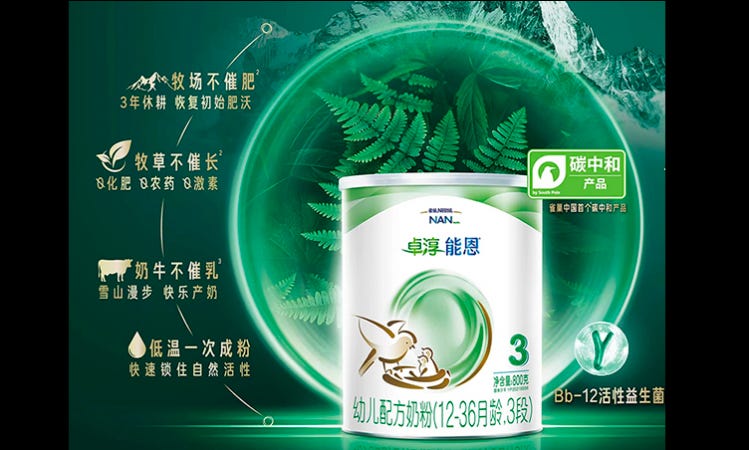Nestle China is Saving the Planet One KitKat 🍫at a time
Today, we're going to take a quick look at what foreign multinational companies are doing in terms of decarbonization in China. Don't worry, we won't bore you with technical mumbo-jumbo. So, let's dive in!
Key Points:
>60% of U.S. companies in China are prioritizing sustainability and ESG 🍀
KitKat launched new packaging design reduces plastic usage by 30% 🍫
Nestle building the first “carbon-neutral” dairy farm in China 🐄
How much carbon footprint is there in a cup of coffee? ☕️
Over 60% U.S. companies in China are prioritizing sustainability and ESG in the country
Let's start with an overview of foreign investments in China (an indicator of foreign interest in China)
China still critical for foreign companies/investments:
China is one of the Top 3 Foreign Direct Investment (FDI) countries in the world (After US & Netherlands), it reached USD $189 billion in 2022, +8% YoY
~960,000 foreign companies in China employed ~27 million people in 2020 (about 20% of China’s urban employment, put it another way the total population of Texas)
China's Ministry of Ecology and Environment (MEE) released guidelines for foreign companies to improve their ESG standards in China.
Over 60% of U.S. companies in China are prioritizing sustainability and ESG in their business strategies, according to a report by the American Chamber of Commerce in China.
This is a significant increase from a few years ago, indicating a shift toward sustainability in China's corporate landscape.
Deep dive into Nestle China and their sustainability initiatives
Let’s use Nestle as a case study to learn what foreign companies are doing in terms of decarbonization in China.
Why Nestle? 1) Nestle is the world's largest food and beverage company, 2) entered China since 1987 (before many of you were born), 3) China is Nestle’s 2nd biggest market, 4) employs 30,000+ people in the country
What are Nestle’s decarbonization commitments?
As part of Nestle's global commitment to achieve net zero emissions by 2050, Nestle China committed to sourcing 100% renewable electricity for their operations in China by 2025.
They achieved zero waste to landfill across all of their factories in China.
Invest USD1.3 billion within next 5 years to facilitate regenerative agriculture and to transform toward a sustainable food system globally.
“For Nestlé, sustainable development is not a slogan or a simple goal, but something that should be implemented every day with practical actions from the inside out, and an important 'license' to determine whether our enterprise can survive in the future," said David Fang, vice president of Corporate Affairs & Sustainability, Nestlé Zone Greater China”
How is Nestle China fulfilling these commitments?
They made some progress across function and product lines over past 2 years.
🍫Kitkat went through some drama with Greenpeace in 2010 but since then they took steps to reduce their carbon footprint. In 2021, they launched a new packaging design that reduces the amount of plastic used by 30%. Let’s hope no more orangutan homes were destroyed due to our love of chocolate.
🧑🌾Started building the first “carbon-neutral” dairy farm in Heilongjiang, China, where cattle breeding accounts for 60% of GHG emissions in the region.
🍼Introduced the first “carbon-neutral” Infant Milk Formula Organic NAN 3 in China, each tin can offset 14.2kg of carbon emission (Equivalent to driving a car for 100km!)
☕Implemented a sustainable packaging initiative for their coffee products. This initiative reduces the weight of packaging materials and uses more sustainable materials.
🚚Nestle China has also been working to reduce the carbon footprint of their transportation by optimizing logistics and utilizing more efficient transportation methods.

We also dug up some interesting content during our research. Enjoy!
So what? Overall, it's great to see foreign multinationals commitments to sustainability in China across its value chain. From renewable energy to waste reduction to sustainable agriculture production, these companies are making a real difference.
We hope to see more companies follow their footsteps and prioritize sustainability in their operations too.
Random Facts: How much carbon footprint is there in 1 cup of coffee?
Takeaway: 1) Drink less milk. 2) Walk 3km instead of driving every time you drink 1 coffee, because you could save about 205g of carbon emissions.
Other news/materials:
We are wrapping things up like a burrito my friends. Swing by our Twitter @TheGreenCereal to hash out more deets. Think of it as a cozy nightcap after a first date - no awkward goodbyes, fake phone numbers, or lingering questions about whether or not they'll call you back.







